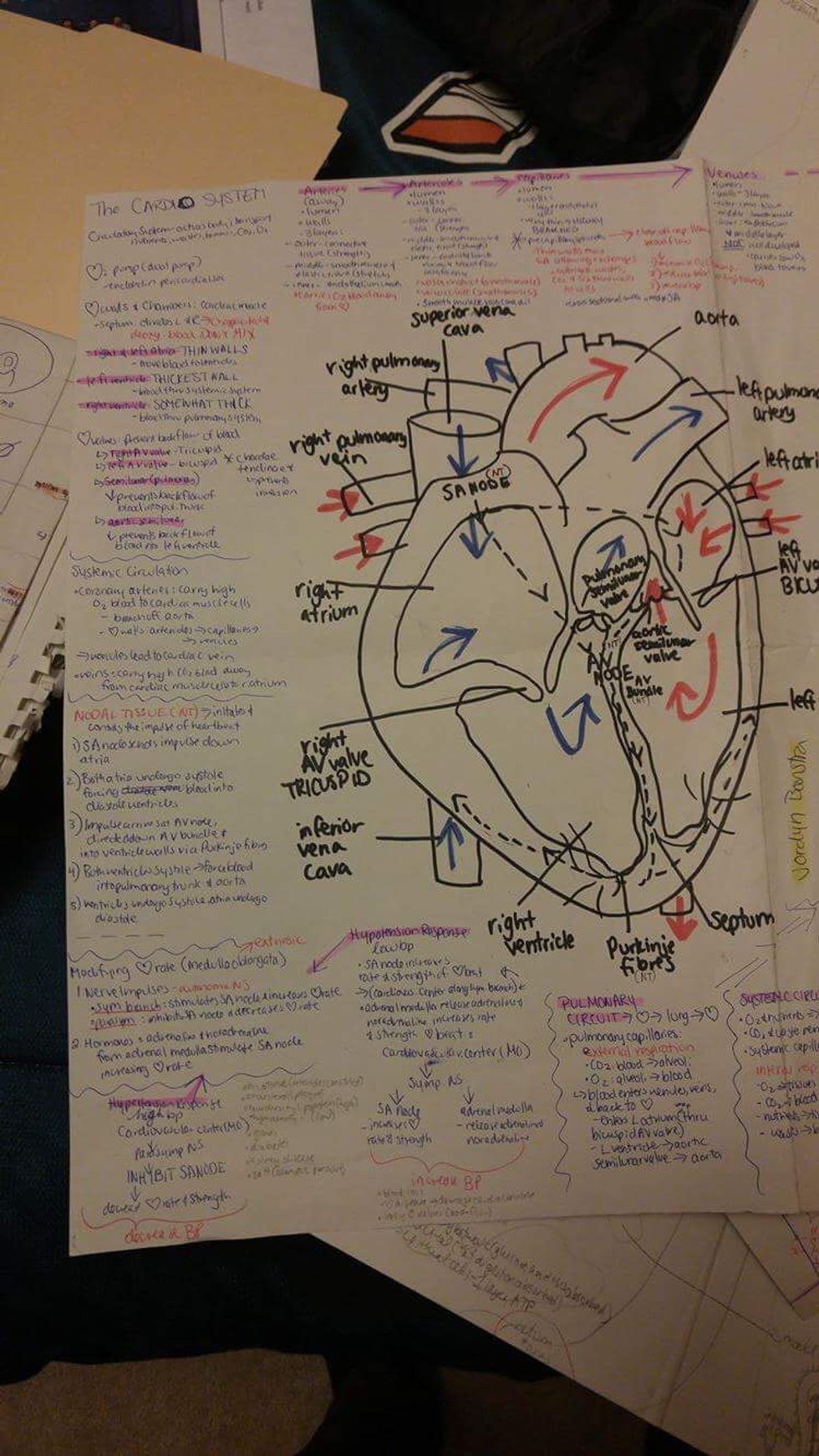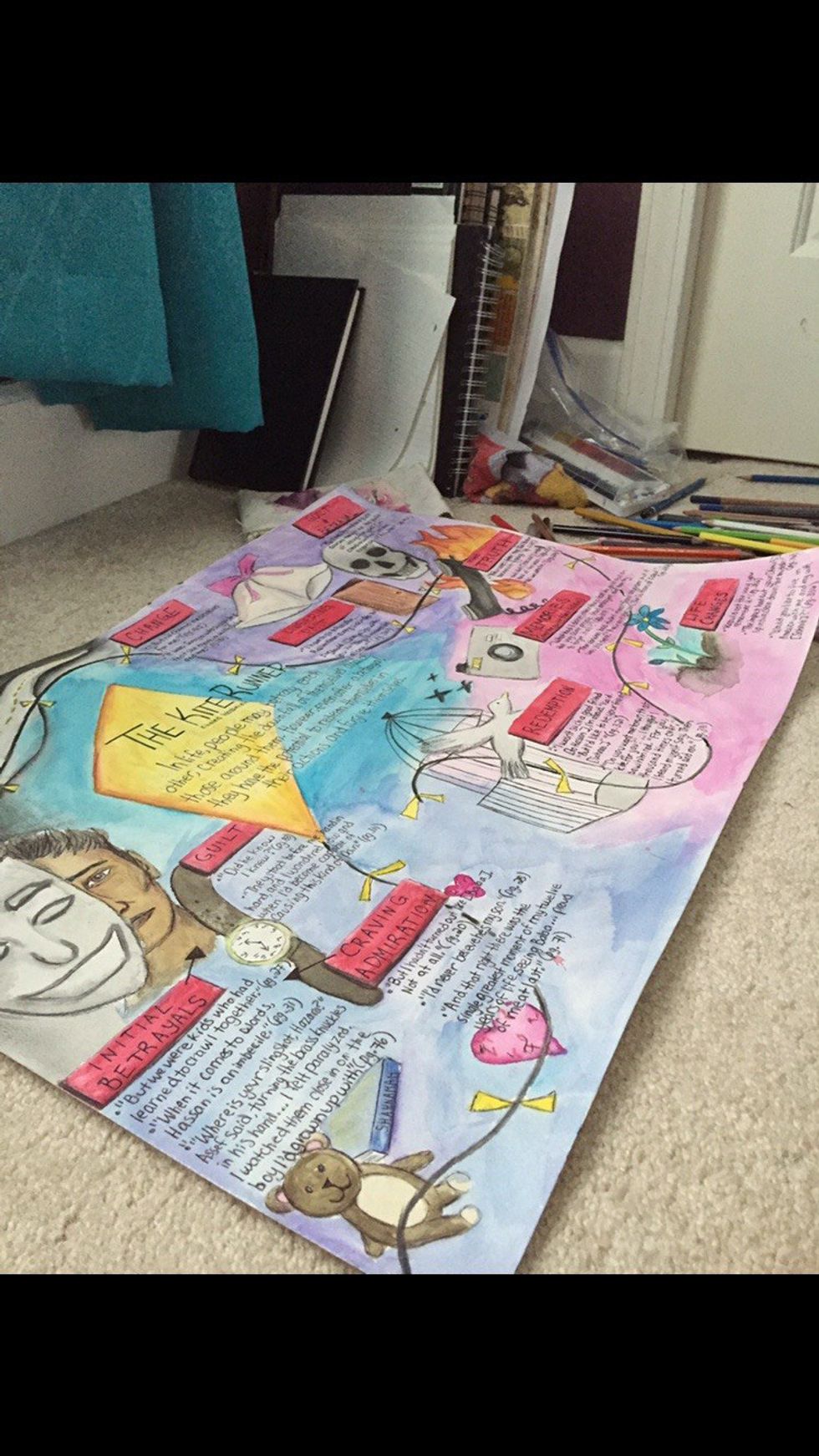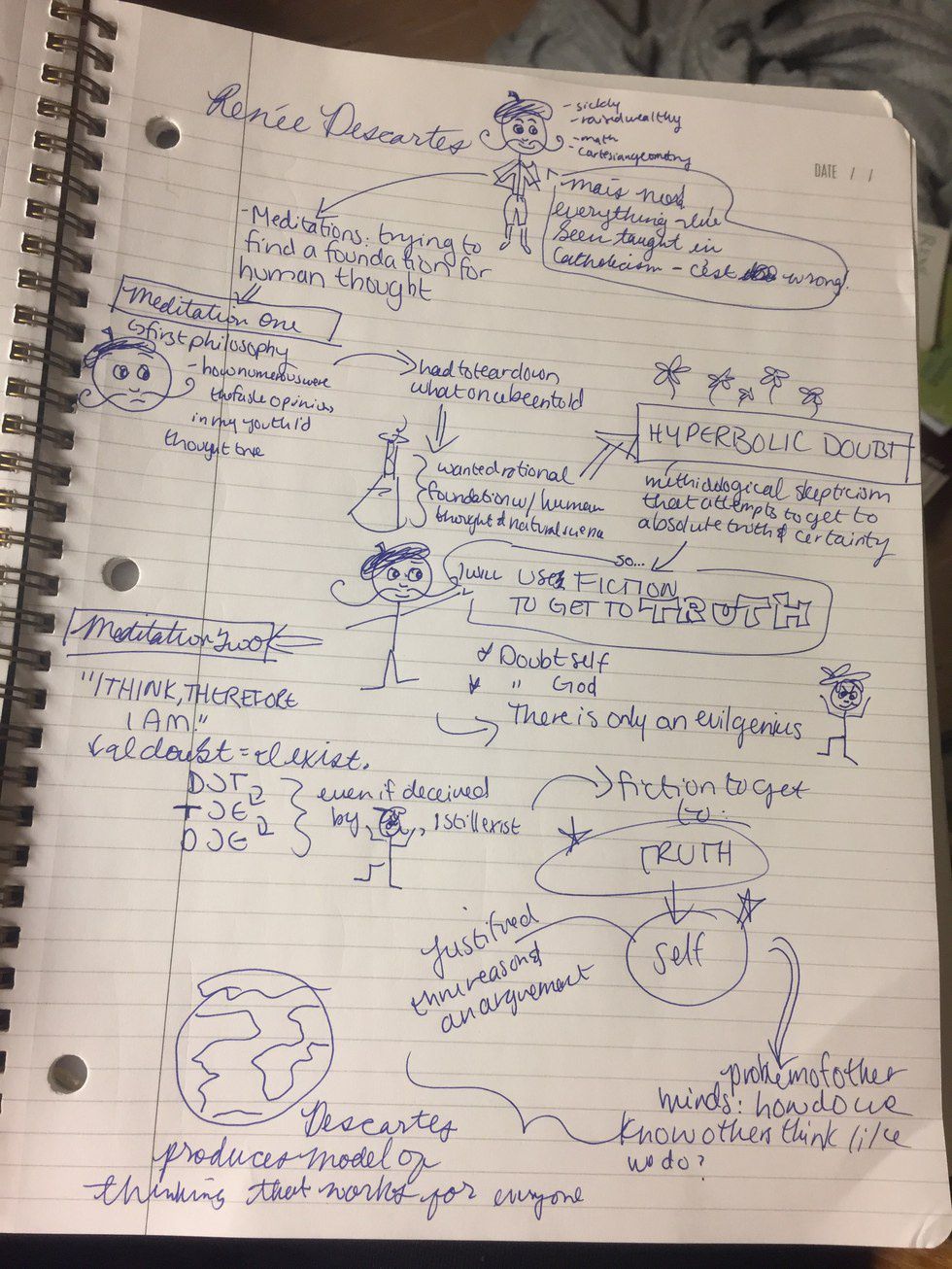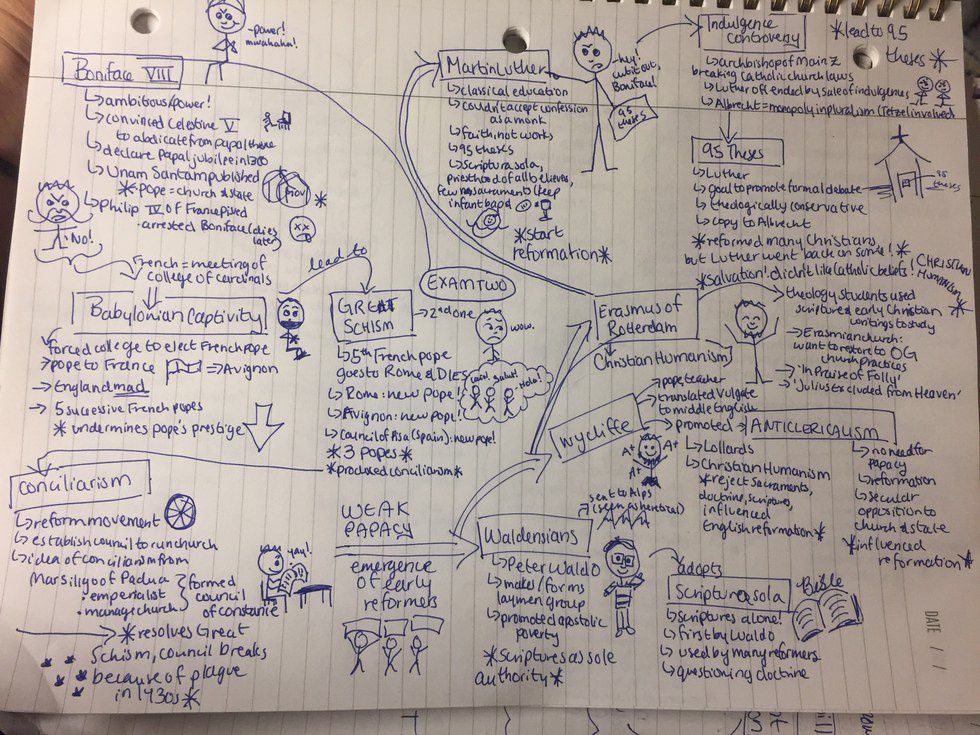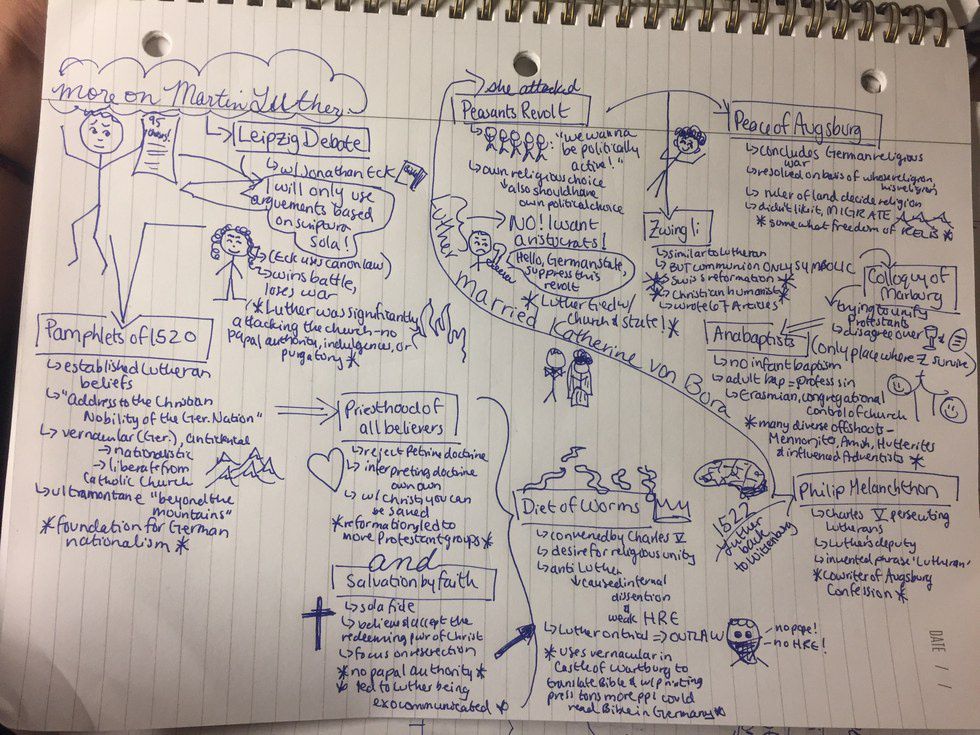I don’t have a well-organized brain (it probably comes from my artsy side or right brain). I don’t like to keep things in little boxes, and I don’t always like things to be linear. To understand something I need to do one of two things: connect an idea to another idea that I already understand or think of a creative visual way to solve the problem.
Which is why mind maps are what I live on for notes.
They have been shown to help people learn better because it not only allows for more brainstorming, but it also helps to put all the important information together in one big space. This way, more connections can be made between each area you are studying in a certain subject.
I was first introduced to this idea in eighth grade, and I was honestly just excited because I got to draw. I didn’t even notice how much I was learning while connecting everything to one big idea.
Usually mind maps work well for subjects like Biology, English, Psychology, and History. I've tried with Math, and even though I make connections between concepts better, I stick with using visuals in humanities areas.
In Biology, the first thing I used to do was draw a diagram. No, they weren’t always accurate, but that way I could connect everything I was learning to the big picture: how the body was working. It also helped because I didn’t feel overwhelmed by pages and pages of lists of what carbohydrates and lipids did, or what functions the endocrine system had, or the structure of DNA, mRNA, RNA, rRna, and tRNA. By having it all together, in a couple of pages where arrows were drawn, where different colours were used, and where everything was connected to something, I could learn the basic functioning, and then move on.
Here is an example of a bio mind map I made in my senior year of high school:
Mind maps don’t only help in memorization, though, they also help in understanding a topic more fully. My favourite kind is for English, because I can turn a mind map into a visual essay. For my AP Lit class in twelfth grade, we got to pick from a bunch of books to do a final project on, and one of the options was ‘ The Kite Runner. ’ I’d never read it before, but had heard good things about it, and by the end of the book I chose to do a visual essay for my project. This was because I got the general gist of the story- I saw the complications. I saw the conflict, and the tension, and the meaning. But, I wanted to delve deeper into each idea, and, for me, by drawing pictures and making connections with quotes, I could make sense of everything more concisely. Here is the result of my visual essay:
This year, my first year of university, I’ve relied on mind maps more than anything else for learning. Sure, I sit in class and take regular(ish) notes (pictures and ideas seem to kind of show up on my paper). They’re fairly linear, though, and take up page after page of notebook after notebook.
For my History of Western Civ class I go back and make mind maps to study because I can put the important information in a format that connects everything. By drawing arrows around the page I make more connections between people and events, and I do better on my tests because I understand everything on a deeper level than just the memorization of facts.
I have also used this method for my Philosophy class, for my first Western Civilizations class, for my U.S. history class, for my English class, and for my Messages of the Old Testament Class. Here are some examples from my philosophy class and History of Western Civ class. Though they’re not perfect, and might seem unclear (and a little messy), they make sense to me (oh, and the second and and third picture shown here cover a little over nine full pages of hand written notes):
And that’s kind of the beauty of mind maps. They don’t need to make sense to lots of other people. In fact, sometimes, when the mind map makes more sense to you than anyone else, it means you’ve learnt the information on a deeper level. You have made sense of it in a way that you understand.
I will never go back to studying linear notes. Mostly because I’d get bored six pages in, but also because it was difficult to see the connections between events and people and concepts. Mind maps don’t work for everyone, but, if you are a visual learner, or struggle with taking notes, I encourage you to try and draw it out. Draw arrows, draw connections, draw little stick figures if it helps, and always, ALWAYS, start with one big idea that you can branch out from.
Good luck on your exams!




